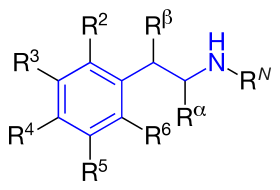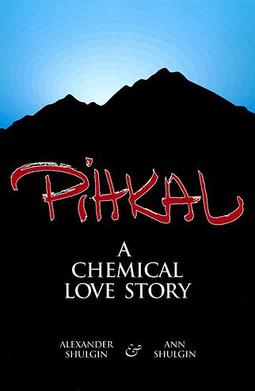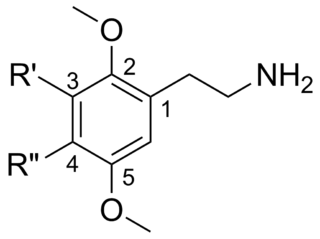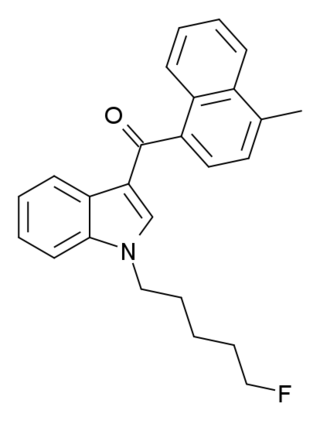| Chemical Structure | Short Name | RN | Rα | Rβ | R2 | R3 | R4 | R5 | Full Name | Biologic activity |
|---|
 | meta-Tyramine | | | | | OH | | | 3-hydroxyphenethylamine | Trace amine |
 | para-Tyramine | | | | | | OH | | 4-hydroxyphenethylamine | Trace amine |
 | Dopamine | | | | | OH | OH | | 3,4-dihydroxyphenethylamine | Catecholamine neurotransmitter |
 | Epinephrine (Adrenaline) | CH3 | | OH | | OH | OH | | β,3,4-trihydroxy-N-methyl phenethylamine | Catecholamine neurotransmitter/Fight or Flight hormone |
 | Norepinephrine (Noradrenaline) | | | OH | | OH | OH | | β,3,4-trihydroxyphenethylamine | Catecholamine neurotransmitter/Fight or Flight hormone |
 | Norfenefrine | | | OH | | OH | | | β,3-dihydroxyphenethylamine | Trace amine |
 | para-Octopamine | | | OH | | | OH | | β,4-dihydroxyphenethylamine | Trace aminergic α-adrenoceptor agonist |
 | Oxidopamine | | | | OH | | OH | OH | 2,4,5-trihydroxyphenethylamine | neurotoxic agent for the dopamine and norepinephrine receptors |
 | Phenylephrine | CH3 | | OH | | OH | | | β,3-dihydroxy-N-methylphenethylamine | α-adrenergic agonist; decongestant |
 | Isoprenaline | CH(CH3)2 | | OH | | OH | OH | | β,3-dihydroxy-N-methylphenethylamine | β-adrenergic agonist; decongestant |
 | Salbutamol | C(CH3)3 | | OH | | CH2OH | OH | | β,4-dihydroxy-3-hydroxymethyl-N-tert-butylphenethylamine | Short-action β2-adrenergic agonist |
 | β-Methylphenethylamine | | | CH3 | | | | | β-methylphenethylamine | Stimulant |
 | Amphetamine | | CH3 | | | | | | α-methylphenethylamine | Monoamine releasing agent; Stimulant |
 | N-Methylphenethylamine | CH3 | | | | | | | N-methylphenethylamine | Trace amine; endogenous amphetamine isomer |
 | N,N-Dimethylphenethylamine | (CH3)2 | | | | | | | N,N-dimethylphenethylamine | Trivial effects (used as a food additive and flavoring agent) |
 | Methamphetamine | CH3 | CH3 | | | | | | N-methylamphetamine; N,α-dimethylphenethylamine | Monoamine releasing agent; stimulant; neurotoxin |
 | Phentermine | | (CH3)2 | | | | | | α-methylamphetamine; α,α-dimethylphenethylamine | Stimulant, anorectic |
 | Ortetamine | | CH3 | | CH3 | | | | 2-methylamphetamine; 2,α-dimethylphenethylamine | Stimulant, anorectic |
 | Phenelzine | NH2 | | | | | | | β-phenylethylhydrazine | Monoamine oxidase inhibitor |
 | Tranylcypromine | | -CH2- | | | | | 2-phenylcyclopropylamine | Monoamine oxidase inhibitor |
 | Selegiline | -CH2-C≡CH | CH3 | | | | | | N,α-dimethyl-N-2-propynylphenethylamine | MAO-B selective monoamine oxidase inhibitor |
 | Methylphenidate | -CH2-CH2-CH2-CH2- | C(OCH3)=O | | | | | N,α-butylene-β-methoxycarbonylphenethylamine | NDRI; Stimulant |
 | Ephedrine / Pseudoephedrine | CH3 | CH3 | OH | | | | | N-methyl-β-hydroxyamphetamine | Releasing agent; stimulant; decongestant |
 | Cathine | | CH3 | OH | | | | | d-β-hydroxyamphetamine | Moderately selective norepinephrine releasing agent |
 | Cathinone | | CH3 | =O | | | | | β-ketoamphetamine | Selective norepinephrine and dopamine releasing agent |
 | Methcathinone | CH3 | CH3 | =O | | | | | N-methylcathinone | Selective norepinephrine and dopamine releasing agent |
 | Mephedrone | CH3 | CH3 | =O | | | CH3 | | 4-methylmethcathinone | Stimulant, unknown pharmacodynamic actions |
 | Ethcathinone | CH2CH3 | CH3 | =O | | | | | N-ethylcathinone | Stimulant and norepinephrine releasing agent |
 | Amfepramone (diethylpropion) | C2H5, C2H5 [note 2] | CH3 | =O | | | | | N-diethyl-β-ketoamphetamine | Anorectic |
 | Bupropion | C(CH3)3 | CH3 | =O | | | | Cl | 5-chloro-N-tert-butyl-β-ketoamphetamine | NDRI |
 | Norfenfluramine | | CH3 | | | CF3 | | | 3-trifluoromethyl-amphetamine | SSRA |
 | Fenfluramine | CH2CH3 | CH3 | | | CF3 | | | 3-trifluoromethyl-N-ethylamphetamine | SSRA |
 | 5-APB | | CH3 | | | -CH=CH-O- | | 5-(2-aminopropyl)benzofuran | Stimulant, entactogen |
 | 6-APB | | CH3 | | | -O-CH=CH- | | 6-(2-aminopropyl)benzofuran | Stimulant, entactogen |
 | MDA | | CH3 | | | -O-CH2-O- | | 3,4-methylenedioxy-amphetamine | Stimulant, psychedelic, entactogen |
 | MDEA | CH2CH3 | CH3 | | | -O-CH2-O- | | 3,4-methylenedioxy-N-ethylamphetamine | Psychedelic, entactogen, and releasing agent |
 | MDMA | CH3 | CH3 | | | -O-CH2-O- | | 3,4-methylenedioxy-N-methylamphetamine | Psychedelic, entactogen, and releasing agent |
 | MDMC | CH3 | CH3 | =O | | -O-CH2-O- | | 3,4-methylenedioxymethcathinone | Psychedelic, entactogen, and releasing agent |
 | MMDA | | CH3 | | | -O-CH2-O- | OCH3 | 5-methoxy-3,4-methylenedioxy-amphetamine | Stimulant, psychedelic and entactogen |
 | MMDMA | CH3 | CH3 | | | -O-CH2-O- | OCH3 | 5-methoxy-3,4-methylenedioxy-N-methylamphetamine | Psychedelic, entactogen, and releasing agent |
 | Lophophine | | | | | -O-CH2-O- | OCH3 | 5-methoxy-3,4-methylenedioxyphenethylamine | Psychedelic and entactogen |
 | Mescaline | | | | | OCH3 | OCH3 | OCH3 | 3,4,5-trimethoxy phenethylamine | Psychedelic and entactogen |
 | Proscaline | | | | | OCH3 | OCH2CH2CH3 | OCH3 | 2-(3,5-dimethoxy-4-propoxyphenyl)ethanamine | Psychedelic and entactogen |
 | Metaescaline | | | | | OCH2CH3 | OCH3 | OCH3 | 2-(3-ethoxy-4,5-dimethoxyphenyl)ethanamine | Psychedelic and entactogen |
 | Allylescaline | | | | | OCH3 | OCH2CH1CH2 | OCH3 | 4-Allyloxy-3,5-dimethyloxyphenylethylamine | Psychedelic and entactogen |
 | Methallylescaline | | | | | OCH3 | OCH2C(CH2CH3) | OCH3 | 4-Methallyloxy-3,5-dimethoxyphenethylamine | Psychedelic and entactogen |
 | Asymbescaline | | | | | OCH2CH3 | OCH2CH3 | OCH3 | 3,4-Diethoxy-5-methoxyphenethylamine | Psychedelic and euphoriant |
 | DOM | | CH3 | | OCH3 | | CH3 | OCH3 | 2,5-dimethoxy-4-methylamphetamine | Psychedelic |
 | DOB | | CH3 | | OCH3 | | Br | OCH3 | 2,5-dimethoxy-4-bromo amphetamine | Psychedelic |
 | DOC | | CH3 | | OCH3 | | Cl | OCH3 | 2,5-dimethoxy-4-chloro amphetamine | Psychedelic |
 | DOI | | CH3 | | OCH3 | | I | OCH3 | 2,5-dimethoxy-4-iodo amphetamine | Psychedelic |
 | DON | | CH3 | | OCH3 | | NO2 | OCH3 | 2,5-dimethoxy-4-nitro amphetamine | Stimulant |
 | 2C-B | | | | OCH3 | | Br | OCH3 | 2,5-dimethoxy-4-bromophenethylamine | Psychedelic, stimulant, entactogen and euphoriant |
 | βk-2C-B | | | =O | OCH3 | | Br | OCH3 | 2,5-dimethoxy-4-bromo-β-ketophenethylamine | Psychedelic, stimulant, entactogen and euphoriant |
 | 2C-C | | | | OCH3 | | Cl | OCH3 | 2,5-dimethoxy-4-chlorophenethylamine | Psychedelic |
 | 2C-F | | | | OCH3 | | F | OCH3 | 2,5-dimethoxy-4-fluoro phenethylamine | Psychedelic |
 | 2C-I | | | | OCH3 | | I | OCH3 | 2,5-dimethoxy-4-iodophenethylamine | Psychedelic, stimulant |
 | 2C-D | | | | OCH3 | | CH3 | OCH3 | 2,5-dimethoxy-4-methylphenethylamine | Psychedelic, stimulant |
 | 2C-E | | | | OCH3 | | CH2-CH3 | OCH3 | 2,5-dimethoxy-4-ethylphenethylamine | Psychedelic |
 | 2C-P | | | | OCH3 | | CH2-CH3-CH3 | OCH3 | 2,5-dimethoxy-4-propylphenethylamine | Entactogen, euphoriant and Psychedelic |
 | 2C-N | | | | OCH3 | | NO2 | OCH3 | 2,5-dimethoxy-4-nitrophenethylamine | euphoriant |
 | 2C-T-2 | | | | OCH3 | | S-CH2CH3 | OCH3 | 2,5-dimethoxy-4-ethylthio-phenethylamine | Psychedelic |
 | 2C-T-4 | | | | OCH3 | | S-CH(CH3)2 | OCH3 | 2,5-dimethoxy-4-isopropyl thio-phenethylamine | Psychedelic |
 | 2C-T-7 | | | | OCH3 | | S-CH2CH2CH3 | OCH3 | 2,5-dimethoxy-4-propylthio-phenethylamine | Psychedelic |
 | 2C-T-8 | | | | OCH3 | | S-CH2-C3H5 | OCH3 | 2,5-dimethoxy-4-cyclopropyl methylthio-phenethylamine | Psychedelic |
 | 2C-T-19 | | | | OCH3 | | S-C(CH3)3 | OCH3 | 2,5-dimethoxy-4-tert-butylthio-phenethylamine | Psychedelic |
 | 2C-T-21 | | | | OCH3 | | S-CH2-CH2-F | OCH3 | 2,5-dimethoxy-4-(2-fluoroethylthio)-phenethylamine | Psychedelic and euphoriant |
 | 25B-NBOMe [3] | CH2-C6H4-OCH3 | | | OCH3 | | Br | OCH3 | 2-(4-bromo-2,5-dimethoxyphenyl)-N-[(2-methoxyphenyl)methyl]ethanamine | Psychedelic |
 | 25C-NBOMe | CH2-C6H4-OCH3 | | | OCH3 | | Cl | OCH3 | 2-(4-chloro-2,5-dimethoxyphenyl)-N-[(2-methoxyphenyl)methyl]ethanamine | Psychedelic |
 | 25F-NBOMe | CH2-C6H4-OCH3 | | | OCH3 | | F | OCH3 | 2-(4-fluoro-2,5-dimethoxyphenyl)-N-[(2-methoxyphenyl)methyl]ethanamine | Psychedelic |
 | 25I-NBOMe | CH2-C6H4-OCH3 | | | OCH3 | | I | OCH3 | 2-(4-iodo-2,5-dimethoxyphenyl)-N-[(2-methoxyphenyl)methyl]ethanamine | Psychedelic |
 | 25D-NBOMe | CH2-C6H4-OCH3 | | | OCH3 | | CH2 | OCH3 | 2-(4-methyl-2,5-dimethoxyphenyl)-N-[(2-methoxyphenyl)methyl]ethanamine | Psychedelic |
 | 25E-NBOMe | CH2-C6H4-OCH3 | | | OCH3 | | CH2-CH3 | OCH3 | 2-(4-ethyl-2,5-dimethoxyphenyl)-N-[(2-methoxyphenyl)methyl]ethanamine | Psychedelic |
 | 25P-NBOMe | CH2-C6H4-OCH3 | | | OCH3 | | CH2-CH3-CH3 | OCH3 | 2-(4-propyl-2,5-dimethoxyphenyl)-N-[(2-methoxyphenyl)methyl]ethanamine | Psychedelic |
 | Mescaline-NBOMe | CH2-C6H4-OCH3 | | | | OCH3 | OCH3 | OCH3 | N-(2-Methoxybenzyl)-2-(3,4,5-trimethoxyphenyl)ethanamine | Psychedelic |
 | 25B-NBOH | CH2–C6H4–OH | | | OCH3 | | Br | OCH3 | N-(2-hydroxybenzyl)-2,5-dimethoxy-4-bromo-phenethylamine | Psychedelic |
 | 25C-NBOH | CH2–C6H4–OH | | | OCH3 | | Cl | OCH3 | N-(2-hydroxybenzyl)-2,5-dimethoxy-4-chloro-phenethylamine | Psychedelic |
 | 25I-NBOH | CH2–C6H4–OH | | | OCH3 | | I | OCH3 | N-(2-hydroxybenzyl)-2,5-dimethoxy-4-iodo-phenethylamine | Psychedelic |
 | 25I-NBF | CH2–C6H4–F | | | OCH3 | | I | OCH3 | N-(2-fluorobenzyl)-2,5-dimethoxy-4-iodo-phenethylamine | Psychedelic |
| Short Name | RN | Rα | Rβ | R2 | R3 | R4 | R5 | Full Name | Biologic activity |
|---|


























































































